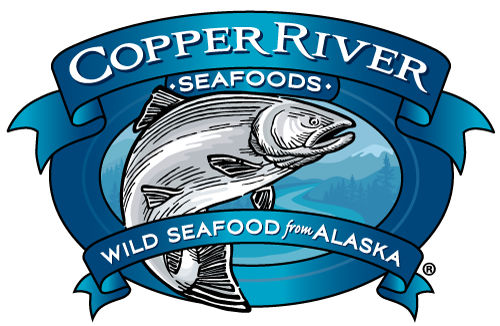Posted by "The Mermaid" on 10th Jul 2018
ALASKA’S PRINCE WILLIAM SOUND (AND THE GLORIOUS SALMON)
From the Blog: Seafood is the New Black; a food and travel blog all about seafood and sea life.

What do you see? What do you hear? Taste? Feel?
I can smell the sea. Taste the salt in the air, hear the waves cresting and falling as they brush against the boat. And I can feel the chill from the Alaskan water as it lands against my skin …
FACT: There are roughly 10,000 glaciers in the Prince William Sound.
FACT: There are no salmon farms in Alaska (nor are there any fin-fish farms) so if you see salmon, regardless of the variety, that hails from our 49th state, you can be assured its wild-caught.
Today, delivered to my front door courtesy of the Copper River & Prince William Sound Marketing Association, sockeye salmon fresh off the boat in the PWS. Happiness ensues. Want this same kind of happiness delivered to you … consider ordering direct from Copper River Seafoods. Not only will you be supporting the hardworking men and women who fish Alaskan waters, you’ll also be getting a superior product. Give it a try, and if you do, drop me a line and let me know what you order.
An excerpt from an article I wrote last year about the PWS and the Copper
Every year come mid-May, in south central Alaska, there is a massive exodus. But it’s not snowbirds vacating their homes in search of warmer weather—I mean, why would they leave when the temperature is teetering near 60? Mild by Midwest standards, but darn near sauna-like for Alaskans. Still, the exodus happens … and it’s been happening at the same time every year since the Ice Ages.
Alaska’s Prince William Sound is home to the Copper River—a glacial-fed river with a nearly 35-mile-wide gorge where the river dumps over 500,000 cubic feet of water per second into the Gulf of Alaska, and where thousands of young salmon leave their birthplace in the Copper to feed at sea for the next few years. Then, some two to seven years later, the now-adult salmon leave the Gulf to make their 300-mile-long journey home to spawn—an arduous task fueled by their high concentration of omega-3 fatty acids, an inimitable trait that makes salmon, especially those from the Copper River, one of the most coveted of all seafoods, worldwide … READ MORE





This is how salmon is supposed to look. Bright. Cheery. Happy. The flesh is bright, cheery almost happy looking. It’s not dull. It’s not limp. It’s not heavy. It’s springy to touch, light and has a clean, fresh scent.
The Copper River & Prince William Sound Marketing Association is a fisherman funded non-profit based in Cordova, Alaska. The organization works directly with the men and women who fish for wild salmon and work tirelessly to bring the prized fish to tables across America.
Coming up next week on the blog … Chefs against blue fin tuna, and why you need to join the cause … and more about Alaskan salmon and the Copper River. Until then, here are few short reads to tide you over:
Read more about salmon varieties in my Complete Guide to Salmon
How to cook salmon at home
Why I don’t eat Faroe Island salmon
Want more from The Midwest Mermaid? Be sure to follow along here, and on Instagram for all the latest in seafood news and chews | @shaunanosler
DISCLAIMER: I’m a writer and an editor. And I try my best to make sure every post is articulate and free from errors. However, being that I edit my own work—and it’s next to impossible to properly edit your own work—I admit, occasionally there may be an error or two I miss. But doing so doesn’t make me an idiot so don’t be mean. Just smile, pat yourself on the back for finding an error and be glad you’re not the only one who makes mistakes sometimes … yes, even mermaids slip up every now and then. xoxox
